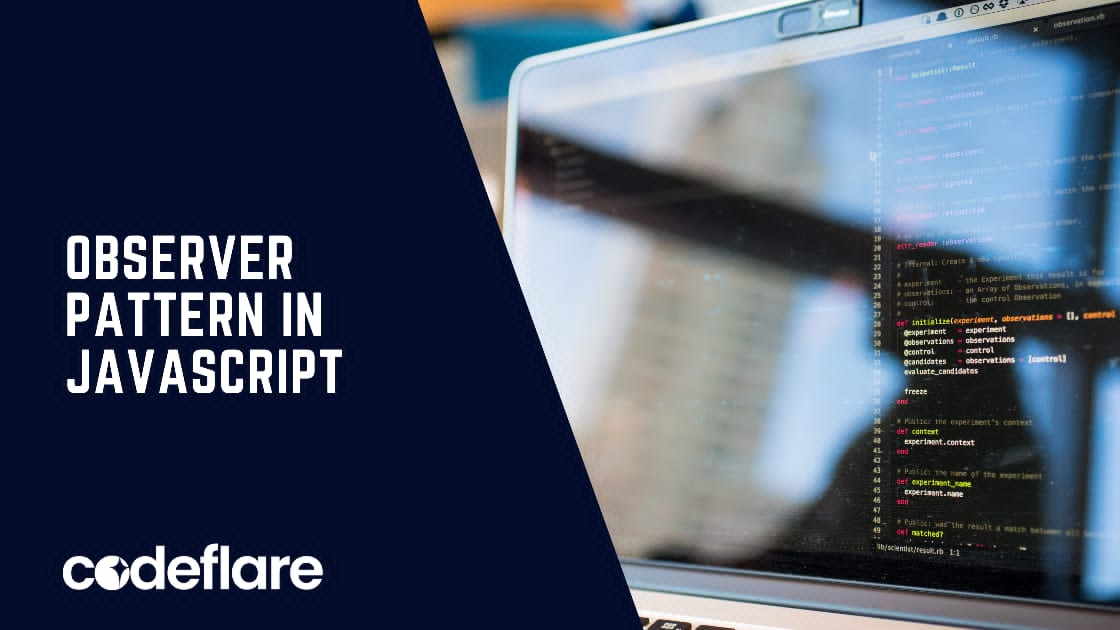
Introduction
The Observer Pattern is a design pattern used to manage and notify multiple objects when the state of an observable object changes. It’s widely used in JavaScript to implement event-driven systems such as event listeners and publish-subscribe (pub/sub) systems. This article will explain the concept, show how to implement it in JavaScript, and provide real-world examples.
What is the Observer Pattern?
The Observer Pattern follows a one-to-many relationship between objects. There’s one subject (observable) that keeps track of its state, and multiple observers waiting for updates. Whenever the subject changes, it notifies all observers.
This pattern is common in:
- Event listeners (DOM events)
- Reactive programming libraries like RxJS
- State management systems such as Redux
How the Observer Pattern Works
- Subject (Observable): Manages state and maintains a list of observers.
- Observers: Get notified when the subject’s state changes.
- Notification Mechanism: When the state changes, all observers receive an update.
Example: Building a Custom Observer Pattern from Scratch
Here’s a simple implementation of the Observer Pattern in JavaScript. We’ll create a Subject class that allows observers to subscribe, unsubscribe, and receive notifications when something changes.
Code Example
// Subject (Observable) Class
class Subject {
constructor() {
this.observers = []; // List of observers
}
// Add an observer
subscribe(observer) {
this.observers.push(observer);
console.log(`Observer subscribed.`);
}
// Remove an observer
unsubscribe(observer) {
this.observers = this.observers.filter(obs => obs !== observer);
console.log(`Observer unsubscribed.`);
}
// Notify all observers about a change
notify(data) {
console.log(`Notifying observers...`);
this.observers.forEach(observer => observer.update(data));
}
}
// Observer Class
class Observer {
constructor(name) {
this.name = name;
}
// Each observer handles updates differently
update(data) {
console.log(`${this.name} received data: ${data}`);
}
}
// Usage Example
const subject = new Subject(); // Create a subject
const observer1 = new Observer('Observer 1'); // Create observers
const observer2 = new Observer('Observer 2');
// Subscribe observers to the subject
subject.subscribe(observer1);
subject.subscribe(observer2);
// Notify all observers with some data
subject.notify('New Update Available');
// Unsubscribe an observer and notify again
subject.unsubscribe(observer1);
subject.notify('Another Update');
Explanation
- Subject (Observable):
- Manages a list of observers.
- Provides methods to
subscribe,unsubscribe, andnotifyobservers.
- Observer:
- Each observer has a unique name and an
updatemethod to respond to changes.
- Each observer has a unique name and an
- Usage:
- We create two observers, subscribe them to the subject, and send notifications.
- After removing one observer, we notify again to show that only the remaining observer gets the update.
Practical Use Cases of Observer Pattern in JavaScript
1. DOM Event Listeners
Every time you attach a click event listener to a button, you’re using the observer pattern under the hood. Here’s how it works:
const button = document.querySelector('#myButton');
button.addEventListener('click', () => {
console.log('Button clicked!');
});
- The button is the subject.
- The event listeners are the observers notified when the event occurs.
2. Custom Event Emitters (Pub/Sub Model)
JavaScript libraries like Node.js’s EventEmitter follow the observer pattern, enabling custom events. Here’s a simplified implementation:
class EventEmitter {
constructor() {
this.events = {};
}
on(event, listener) {
if (!this.events[event]) {
this.events[event] = [];
}
this.events[event].push(listener);
}
emit(event, data) {
if (this.events[event]) {
this.events[event].forEach(listener => listener(data));
}
}
}
// Usage
const emitter = new EventEmitter();
emitter.on('dataReceived', (data) => console.log(`Received: ${data}`));
emitter.emit('dataReceived', 'Hello World!');
3. State Management Systems (Redux and MobX)
In state management libraries, the app’s state is the subject, and components act as observers. When the state changes, the observers (components) update automatically.
Advantages of the Observer Pattern
- Decoupled Components: Observers and subjects don’t need to know about each other’s internals.
- Scalable Architecture: Easily add or remove observers without modifying the subject.
- Asynchronous Communication: Notifications can happen asynchronously (e.g., using Promises or setTimeout).
Drawbacks of the Observer Pattern
- Memory Leaks: If observers aren’t unsubscribed properly, they can cause memory leaks.
- Overhead: Managing many observers can become complex in large-scale applications.
- Unexpected Behavior: Errors in observers can affect the entire notification chain.
Conclusion
The Observer Pattern is a powerful tool for building dynamic, event-driven applications. From simple event listeners to complex state management systems, it plays a crucial role in JavaScript’s ecosystem. By implementing this pattern yourself, you gain a deeper understanding of how frameworks and libraries work behind the scenes.
Whether you’re working with event-driven UIs, building custom pub/sub systems, or designing scalable applications, mastering the observer pattern will enhance your JavaScript skills.
Memory Management in JavaScript






